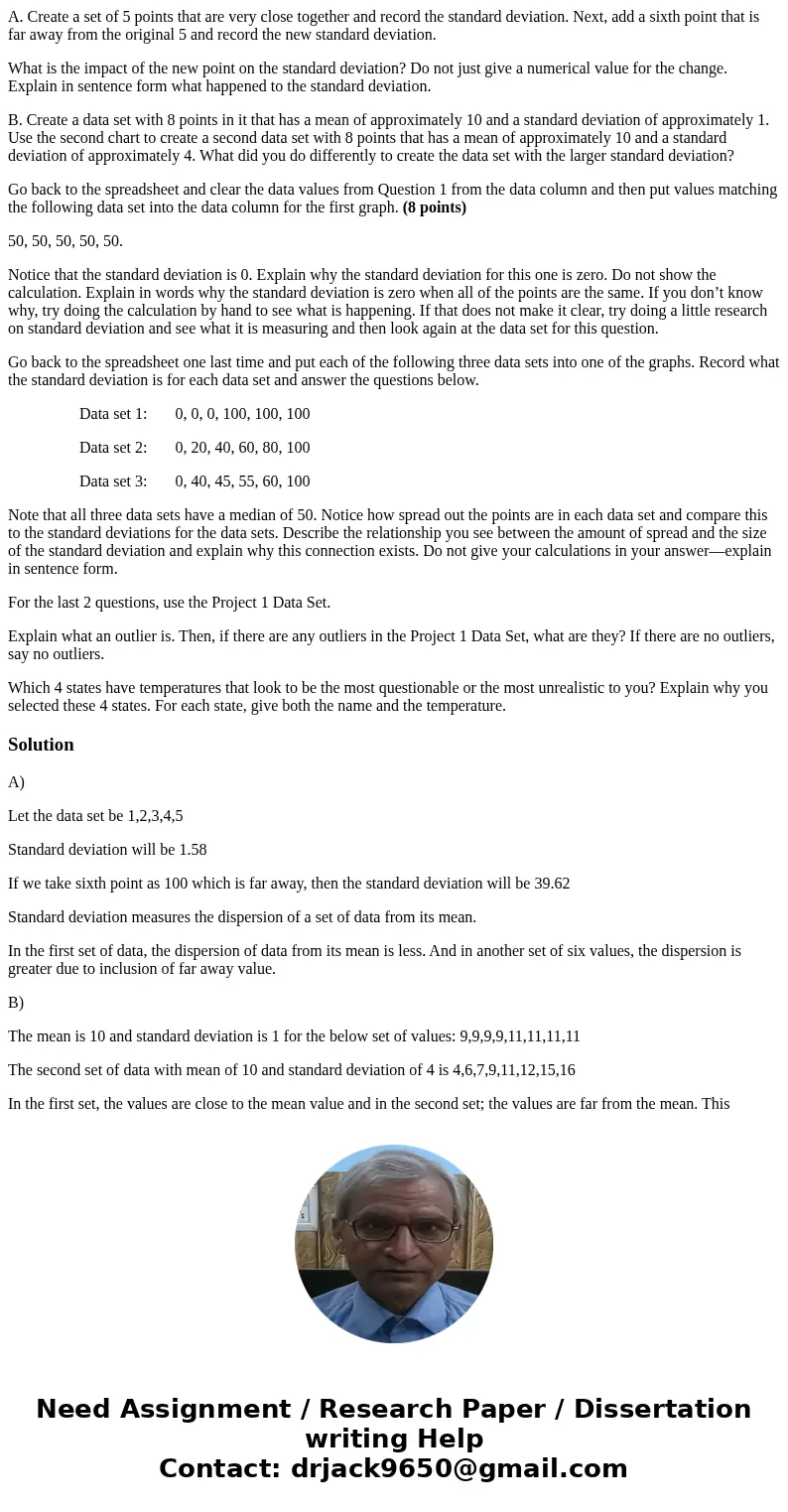A Create a set of 5 points that are very close together and
A. Create a set of 5 points that are very close together and record the standard deviation. Next, add a sixth point that is far away from the original 5 and record the new standard deviation.
What is the impact of the new point on the standard deviation? Do not just give a numerical value for the change. Explain in sentence form what happened to the standard deviation.
B. Create a data set with 8 points in it that has a mean of approximately 10 and a standard deviation of approximately 1. Use the second chart to create a second data set with 8 points that has a mean of approximately 10 and a standard deviation of approximately 4. What did you do differently to create the data set with the larger standard deviation?
Go back to the spreadsheet and clear the data values from Question 1 from the data column and then put values matching the following data set into the data column for the first graph. (8 points)
50, 50, 50, 50, 50.
Notice that the standard deviation is 0. Explain why the standard deviation for this one is zero. Do not show the calculation. Explain in words why the standard deviation is zero when all of the points are the same. If you don’t know why, try doing the calculation by hand to see what is happening. If that does not make it clear, try doing a little research on standard deviation and see what it is measuring and then look again at the data set for this question.
Go back to the spreadsheet one last time and put each of the following three data sets into one of the graphs. Record what the standard deviation is for each data set and answer the questions below.
Data set 1: 0, 0, 0, 100, 100, 100
Data set 2: 0, 20, 40, 60, 80, 100
Data set 3: 0, 40, 45, 55, 60, 100
Note that all three data sets have a median of 50. Notice how spread out the points are in each data set and compare this to the standard deviations for the data sets. Describe the relationship you see between the amount of spread and the size of the standard deviation and explain why this connection exists. Do not give your calculations in your answer—explain in sentence form.
For the last 2 questions, use the Project 1 Data Set.
Explain what an outlier is. Then, if there are any outliers in the Project 1 Data Set, what are they? If there are no outliers, say no outliers.
Which 4 states have temperatures that look to be the most questionable or the most unrealistic to you? Explain why you selected these 4 states. For each state, give both the name and the temperature.
Solution
A)
Let the data set be 1,2,3,4,5
Standard deviation will be 1.58
If we take sixth point as 100 which is far away, then the standard deviation will be 39.62
Standard deviation measures the dispersion of a set of data from its mean.
In the first set of data, the dispersion of data from its mean is less. And in another set of six values, the dispersion is greater due to inclusion of far away value.
B)
The mean is 10 and standard deviation is 1 for the below set of values: 9,9,9,9,11,11,11,11
The second set of data with mean of 10 and standard deviation of 4 is 4,6,7,9,11,12,15,16
In the first set, the values are close to the mean value and in the second set; the values are far from the mean. This resulted in increase in the standard deviation.
In the first set of data, the standard deviation is more as the values given are far from the mean value.
In the second set of data, the data is less scattered as compared to first set.
The third set of data has lesser standard deviation as the data is close to mean value.
The data of project 1 is not mentioned.

 Homework Sourse
Homework Sourse